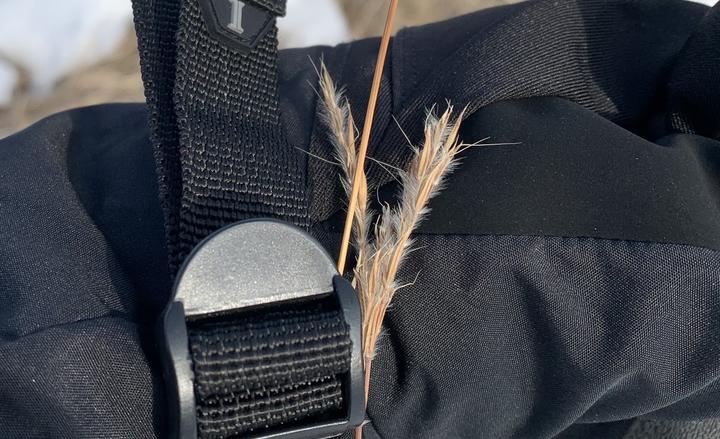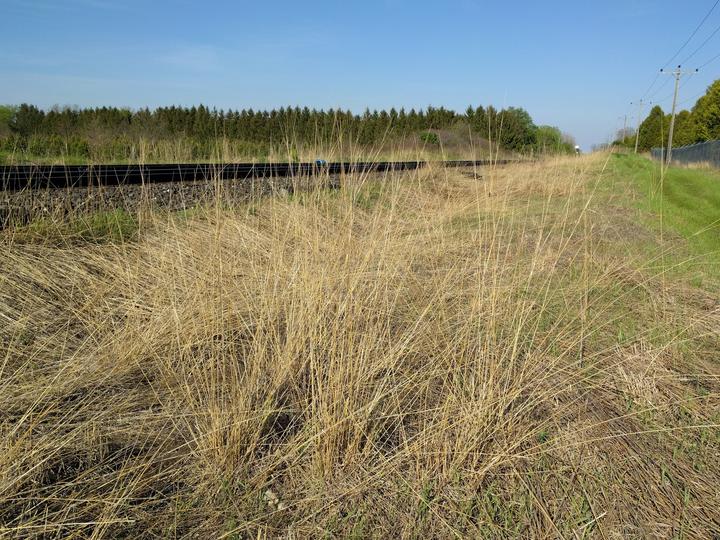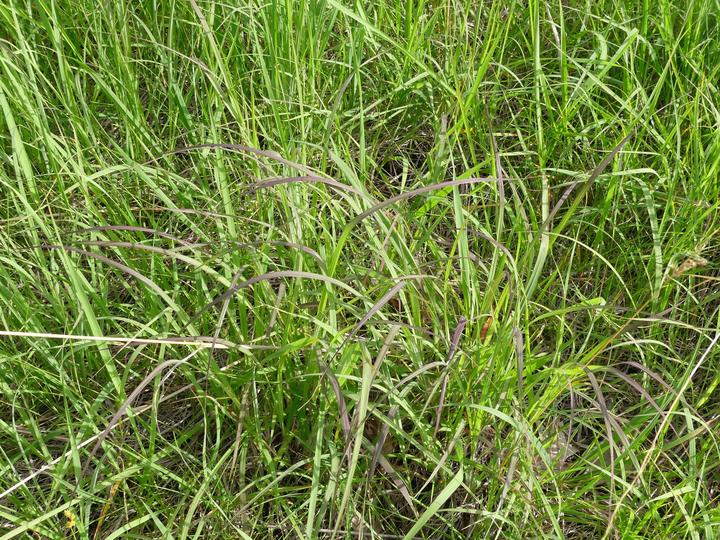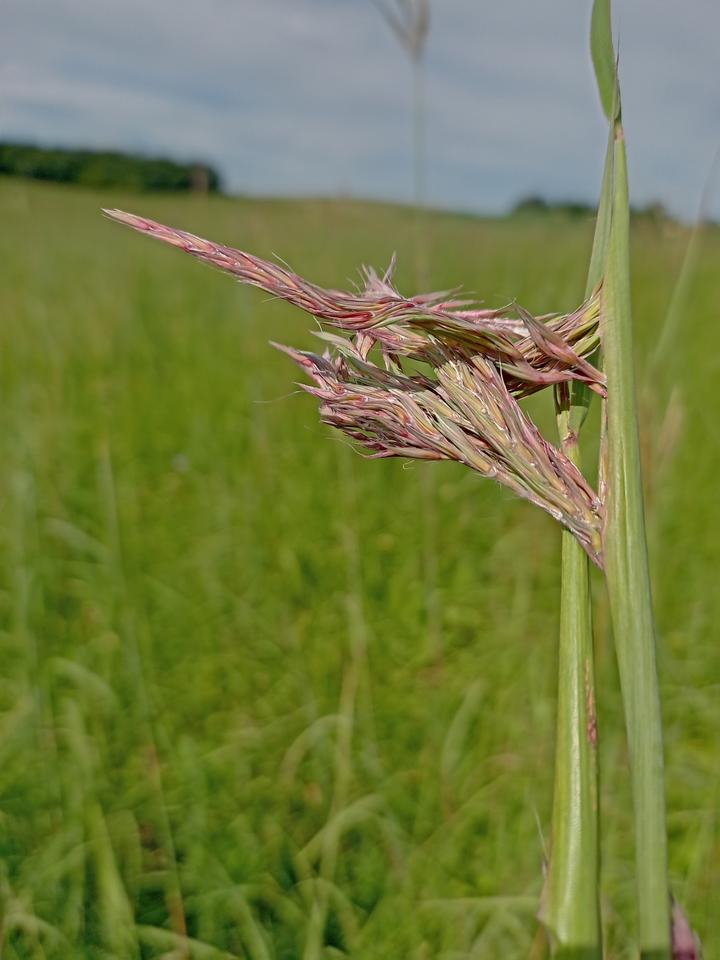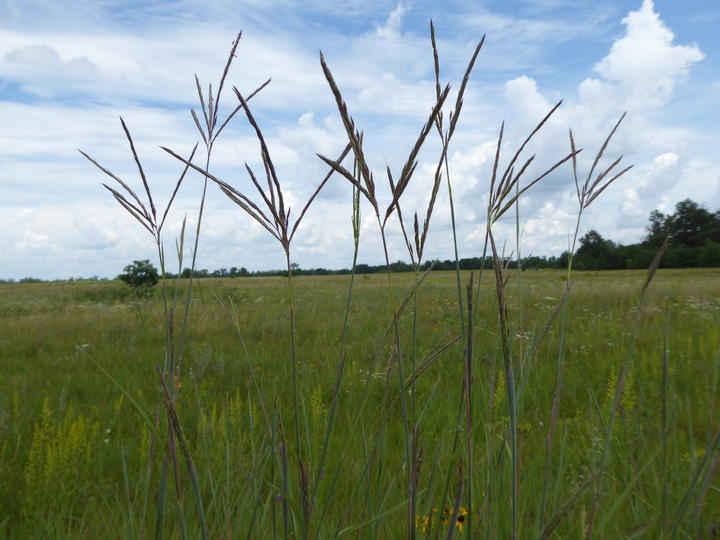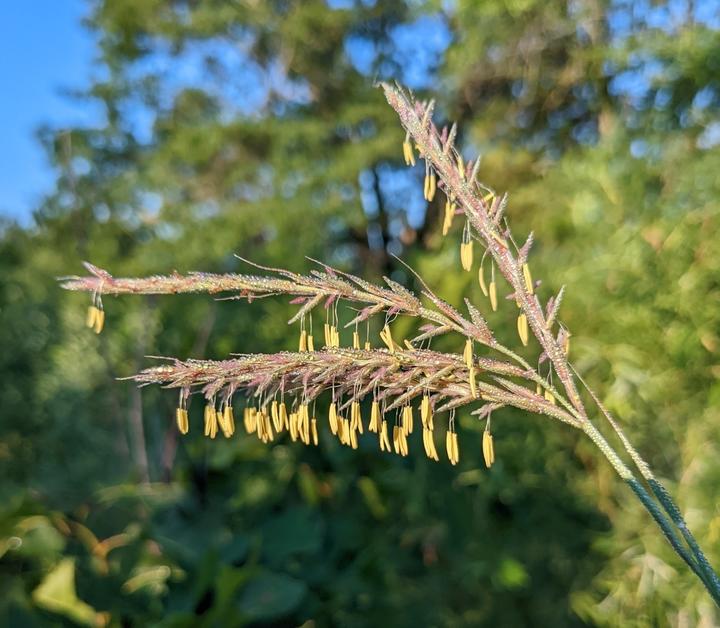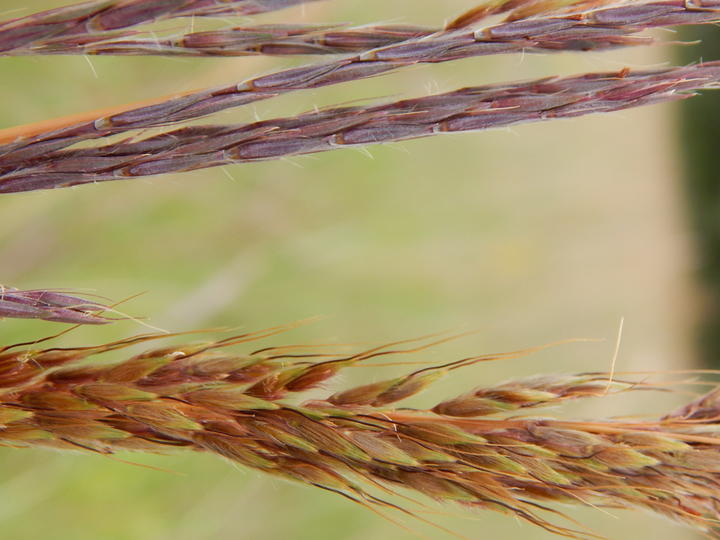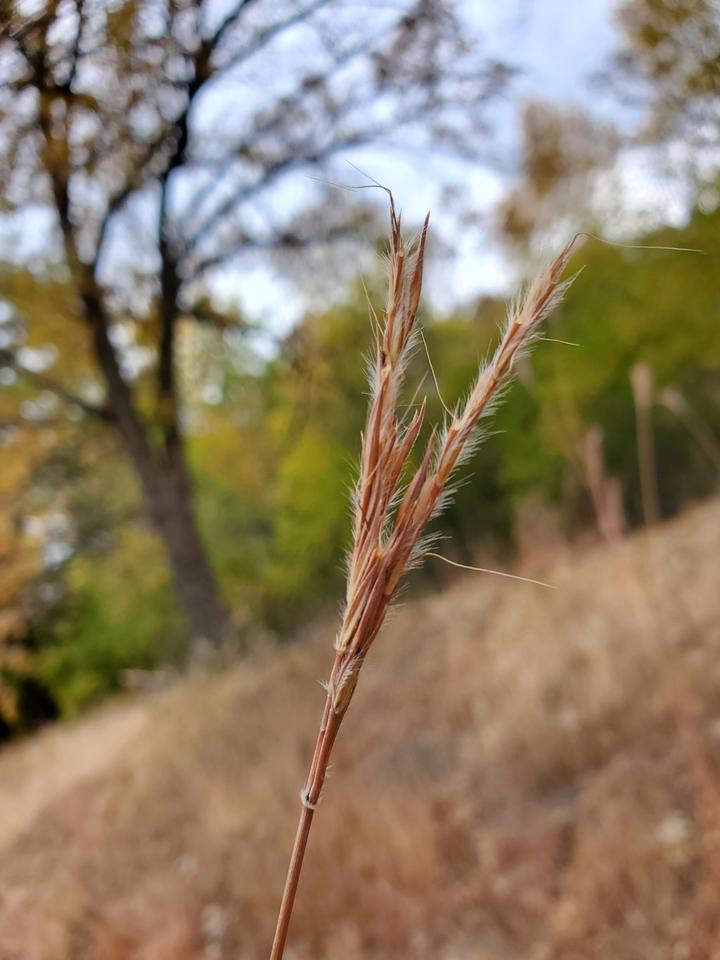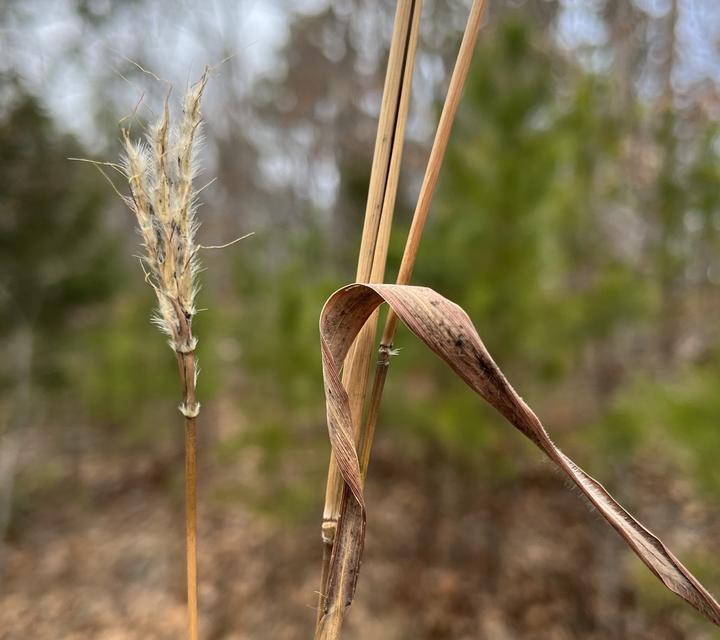More names for this plant
The Dakota and Anishinaabe were among the earliest people to name Minnesota’s plants and animals, as well as to understand them in relation to Minnesota’s climate and seasons. Those original names are still in use, and several are included on the Season Watch website. However, complete translations were not available.
Latin (or scientific name): Andropogon gerardii
The scientific community has a convention of assigning agreed-upon Latin names to every kind of organism. Using scientific names helps people communicate confidently about the same organism and organize lifeforms based on how closely related they are.
More common names: Turkeyfoot, and turkey foot grass
Page contents
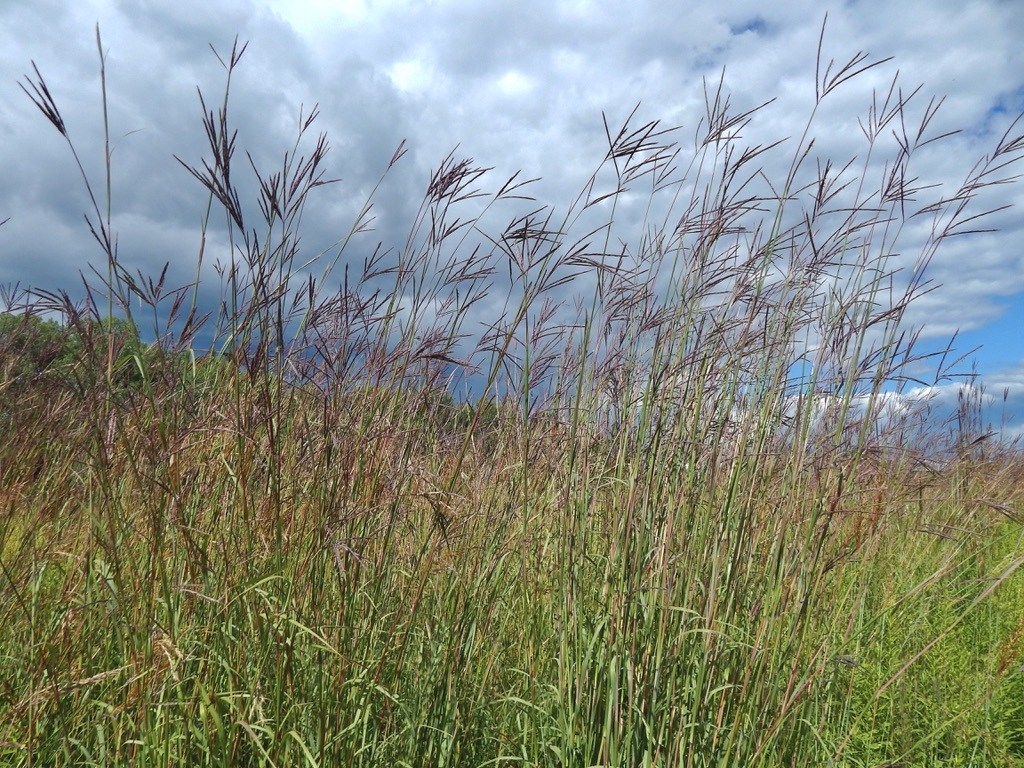
August 4, 2020, Chisago County, Minnesota
Photo © sofiewicklund, some rights reserved (CC-BY-NC)
iNaturalist observation
About big bluestem
- Big bluestem is a native grass that grows up to eight feet in height.
- This grass grows throughout Minnesota, but it does especially well in prairies in the southwest of the state.
- In late summer it produces coarse seed heads that are purple to red in color.
- The seed heads are made up of three spikelets that turn brown when they mature.
- Big bluestem is often used to control erosion and as forage for animals.
Visual guide to phenology
Watch for the appearance of leaves, flowers, and fruits. Take notice of when flowers open, pollen is released, and fruits ripen.
Note to observers
This page explains general clues to watch for when observing big bluestem phenology. However, this page does not explain how to identify this plant or collect data in a standardized way.
- For help with identification, see Minnesota Wildflowers.
- For guidance on collecting data, see Nature’s Notebook.
More resources
Keep exploring Season Watch
Keep exploring Season Watch
Co-author: Lynsey Nass, Minnesota Master Naturalist
